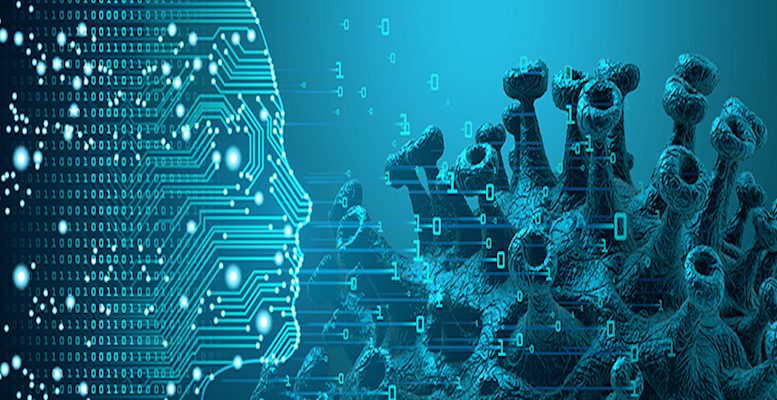Chris Gannatti (WisdomTree) |Artificial Intelligence (AI) is proliferating more widely than ever before, having the potential to influence many aspects of daily life. Crisis periods, like we have seen with the Covid-19 pandemic, are often catalysts for the deployment of new innovations and technologies more quickly.
The power of AI is being harnessed to tackle the Covid-19 pandemic, whether that be to better understand the rate of infection or by tracing and quickly identifying infections. While AI has been associated with the ‘future’ and ideas such as the development of driverless cars, its legacy could be how it has impacted the world during this crisis. It is likely that AI is already playing a major part in the early stages of vaccine development – the uses of artificial intelligence are seemingly endless.
AI was already growing quickly and being deployed in ever more areas of our data-driven world. Covid-19 has accelerated some of these deployments, bringing greater comfort and familiarity to the technology. To really understand how AI is making a difference, it is worth looking at some examples which illustrate the breadth of activities being carried out by AI during the pandemic.
Rizwan Malik, the lead radiologist at Royal Bolton Hospital run by the UK’s National Health Service (NHS) designed a conservative clinical trial to help obtain initial readings of X-rays for patients faster. Waiting for specialists could sometimes take up to six hours. He identified a promising AI-based chest X-ray system and then set up a test to occur over six months. For all chest X-rays handled by his trainees, the system would offer a second opinion. He would then check if the system’s conclusion matched his own and if it did, he would phase the system in as a permanent check on his trainees. As Covid-19 hit, the system became an important way to identify certain characteristics unique to Covid-19 that were visible on chest X-rays. While not perfect, the system did represent an interesting case-study in the use of computer vision in medical imagery.
A great example of the collaborative efforts that can be inspired during times of crisis involved three organisations coming together to release the Covid-19 Open Research Dataset. This includes more than 24,000 research papers from peer-reviewed journals and other sources. The National Library of Medicine at the National Institutes of Health provided access to existing scientific publications; Microsoft used its literature curation algorithms to find relevant articles; and research non-profit the Allen Institute for Artificial Intelligence converted them from web pages and PDFs into a structured format that can be processed by algorithms. Many major cities affected by Covid-19 were faced with a very real problem – getting the right care to the people who needed it without allowing hospitals to become overrun. Helping people to “self-triage”, therefore staying away from the hospital unless absolutely necessary, was extremely important. Providence St. Joseph Health System in Seattle built an online screening and triage tool that could rapidly differentiate between those potentially really sick with Covid-19 and those with less life-threatening ailments. In its first week of operation, it served 40,000 patients.
The Covid-19 pandemic has pushed the unemployment rate in the US to 14.7%. This has led to unprecedented numbers of people filing unemployment claims and asking questions to different state agencies. Texas, which has received millions of these claims since early March, is using artificial intelligence-driven chatbots to answer questions from unemployed residents in need of benefits. Other states, like Georgia and South Carolina, have reported similar activity. To give a sense of scale, the system that has been deployed in Texas can handle 20,000 concurrent users. Think of how much staff would be required to deal with 20,000 inquiries at the same time.
These are but four of many, many ways in which AI has been deployed to help in the time of the Covid-19 pandemic. While we continue to hope for cures and vaccinations, which AI will help in developing, we expect to see more innovative uses of AI that will benefit society over the long-term.





